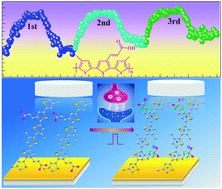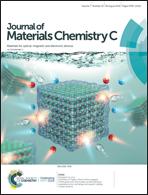Efficient two-terminal artificial synapse based on a network of functionalized conducting polymer nanowires†
Abstract
Artificial synaptic devices are the hardware basis of highly efficient neuromorphic networks with low energy consumption. Great challenges still remain in this research field, like improving the response speed, reducing the energy consumption, and exploring new materials and working principles. In this work, we synthesize a new terthiophene monomer functionalized with a conjugated acrylic acid group (MTAA). The electropolymerization of MTAA results in the formation of a three-dimensional network of conducting polymer nanowires (PMTAA). Based on this nanowire network, a two-terminal artificial synaptic device with multilevel conductance states is fabricated. The device is successfully used to emulate important biological synaptic functions, including paired-pulse facilitation (PPF), spike rate-dependent plasticity (SRDP) and spike timing-dependent plasticity (STDP). The carboxyl groups in the polymer provide a possible way to fast neutralize the positively charged polymer backbone during the oxidation process, which results in the fast response of the device to electrical pulses with an ultralow energy consumption of 6.9 fJ per synaptic event.



 Please wait while we load your content...
Please wait while we load your content...